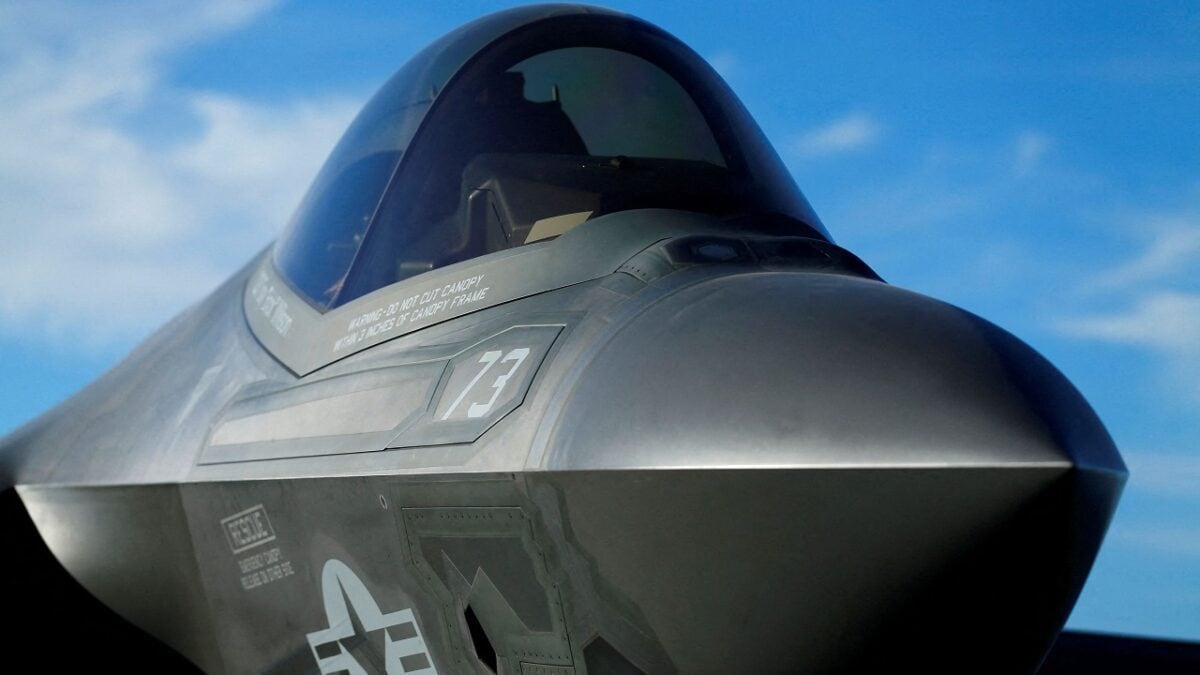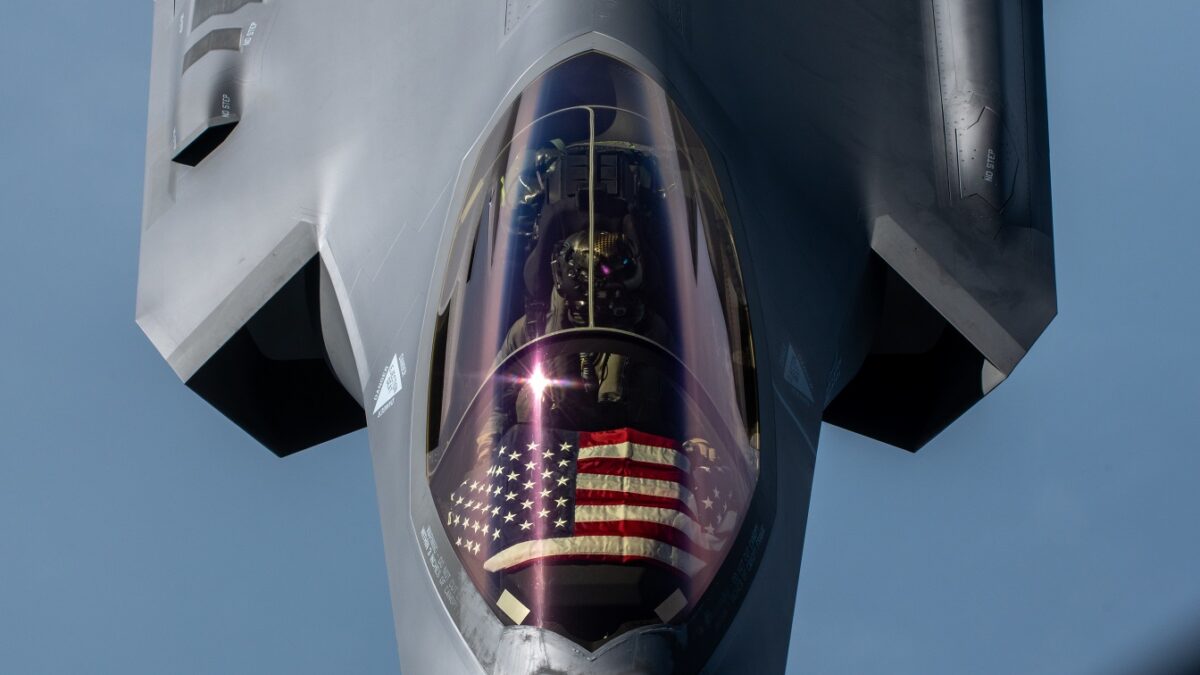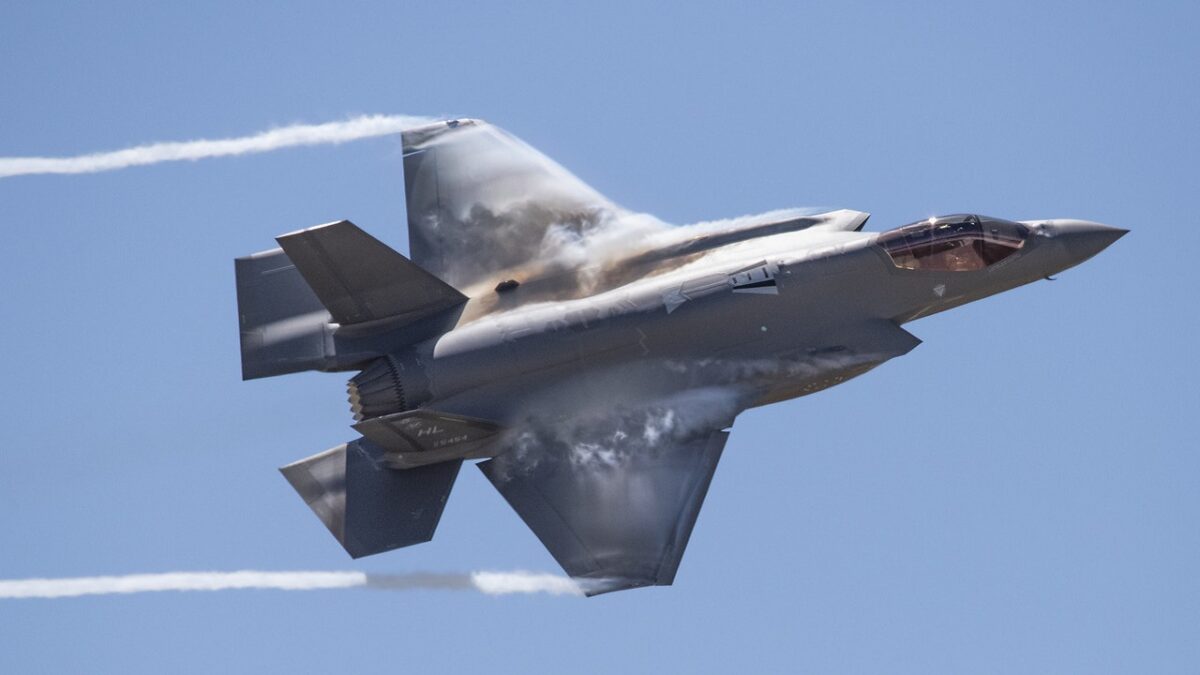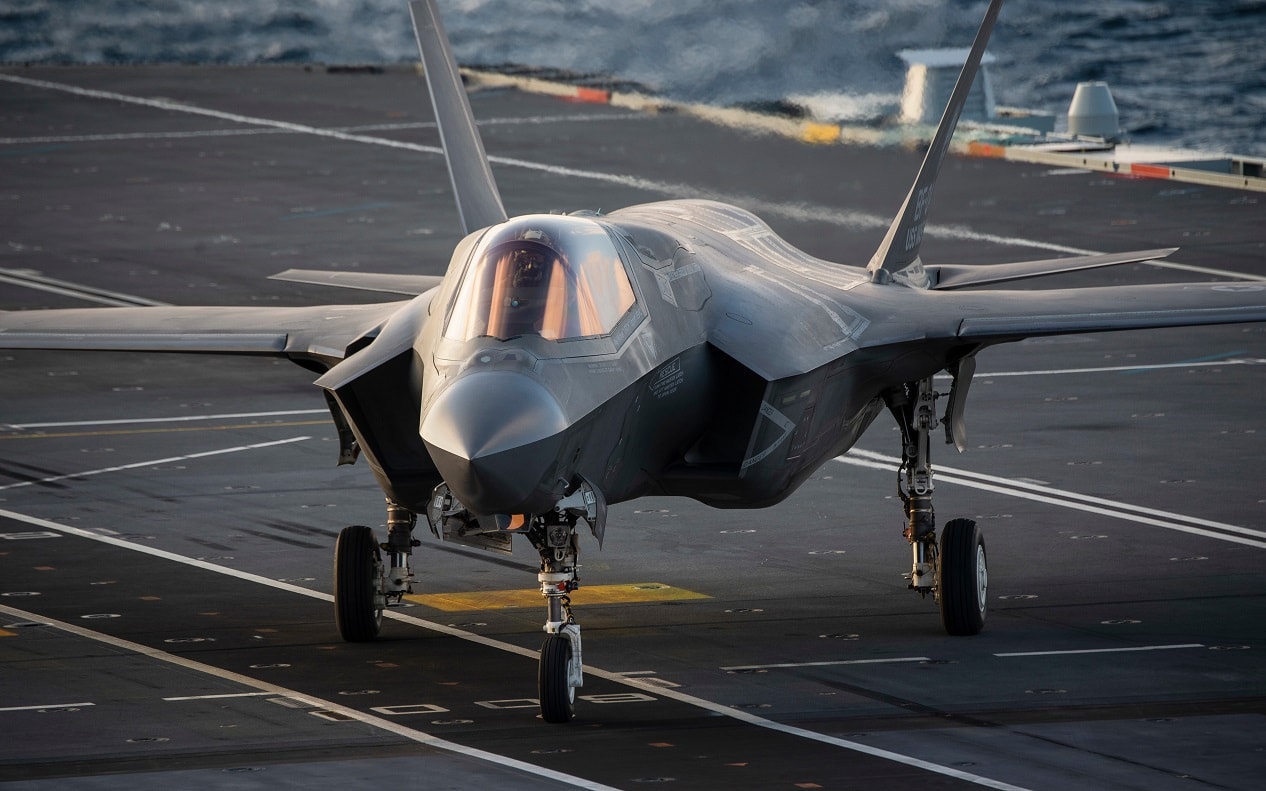How much does an F-35 Lightning II cost?
That’s a difficult question as there are total development costs over the lifecycle of the program and then individual unit costs. Unit costs can sometimes go down as more airplanes are produced, so the price per tail is a moving target. It can be confusing for independent estimates of unit prices because parts and maintenance must also be accounted for.

A Lockheed Martin Corp’s F-35C Joint Strike Fighter is shown on the deck of the USS Nimitz aircraft carrier after making the plane’s first ever carrier landing using its tailhook system, off the coast of California, November 3, 2014. REUTERS/Mike Blake (UNITED STATES – Tags: TRANSPORT MILITARY)/File Photo
Let’s take a look at the lifecycle costs in aggregate and then address the past and current price tag of each airplane.
GAO Says Total F-35 Costs of the Program Are At Least $1.7 Trillion
The closest thing we have to a comprehensive report on F-35 lifecycle costs is a 2021 study from the U.S. Government Accountability Office (GAO). It said that if the Department of Defense buys 2,500 F-35s, the total cost would be over $1.7 trillion, but $1.3 trillion of that figure, according to GAO, is for sustainment and operations costs. That leaves around $400 billion for procuring these 2,500 fighters.
Congress Has Sticker Shock
Members of Congress have pointed out that the sustainment and operations costs are exorbitant. House Armed Services Committee chairman Adam Smith believes that these expenses work out to be around $38,000 per F-35 flight hour. He said in 2021 that the F-35 has become a monetary “rathole.”
What Can Be Done?
The Air Force has tried modifying the contracts with Lockheed Martin to offer performance incentives to reduce these expenditures. The GAO believes that Congress should have the DOD conduct a cost analysis report each year for affordability constraints. And that lawmakers should use the study to determine satisfactory progress in reducing costs. This would include a plan on how to cut the price tag on sustainment and operations. Future F-35 buys, according to GAO, would be conditional on how the DOD is meeting these requirements.
More Mistakes on Cost Estimates
The GAO believes the Air Force and other service branches that fly the F-35 have greatly underestimated sustainment costs and “costs per tail.” The Air Force, for example, thought that $4.1 million each year would be sufficient to sustain it. The real figure is around $7.1 million. The Marine Corps and Navy had similar shortfalls in these expenditures.
It’s the Most Expensive Weapons System In History
Lifecycle, sustainability, and unit costs make the F-35 program the most expensive in history. The F-35 will reach its peak in 2036 and it will be difficult to meet the sustainability costs as they go up each year. There could be a $6 billion gap between the operating price and what the military can afford, the GAO said.
We’re Talking At Least $110 Million Each
By 2021, the individual unit cost had risen to $110.3 million per F-35A, $135.8 million per F-35B, and $117.3 million per F-35C, according to the Center for Arms Control and Non-Proliferation. This would include spare parts and maintenance. However, it should be noted that other sources do site lower per unit costs, which we will get to.
Ballooning Costs Since the Early Days
The Project of Government Oversight (POGO) has followed the F-35 program closely and the watchdog organization noted that in 2001, then Secretary of the Air Force Jim Roche said that each Lightning II would cost only $40 to $50 million per tail and the entire program would have a lifecycle cost of $200 billion. There has been substantial price creep since then, to say the least.
POGO examined the budget documents in 2020. These revealed that the unit price was $77.9 million but it is actually $110 million for the F-35A when all ancillary costs are added such as parts and maintenance, so this is in line with the Center for Arms Control and Non-Proliferations estimates.
Media Outlet Says It Is Cheaper
So, let’s go with $110 million for the F-35A for each airplane. On July 18 of this year, the DOD and Lockheed agreed to provide 375 F-35s over the next three years. If we use $110 million as an estimate for the F-35A, that’s $41.25 billion total and more when you take into account the higher prices for the F-35B and C. But here’s the problem, Reuters said the unit price would be $79 million, and the total costs of the deal to be $30 billion. Does this mean that the more airplanes you make the price goes down? What about inflation and supply chain issues? Shouldn’t this make the F-35 even more expensive?
Who Is Correct?
The unknown answers to these questions are exactly what POGO was warning about in the report referenced above. It is difficult to estimate the price of the airplane when the media uses different costs than the watchdog groups. Perhaps Reuters is not including costs for maintenance and spare parts.

An F-35A Lightning II from the 354th Fighter Wing, Eielson Air Force Base, Alaska, flies behind a KC-135 Stratotanker assigned to the 117th Air Refueling Squadron, Forbes Field Air National Guard Base, Kansas, over the Indo-Pacific, March 10, 2022. Aircrews routinely fly missions aimed at sharpening the necessary skills needed to respond to emerging situations at a moment’s notice. (U.S. Air Force photo by Airman 1st Class Yosselin Perla)

U.S. Air Force Maj. Kristin Wolfe, F-35A Lightning II Demonstration Team commander and pilot, showcases the unique aerial capabilities of the USAFs most advanced 5th generation multi-role stealth fighter, the F-35A, during Wings Over Solano at Travis Air Force Base, California, May 15, 2022. The Wings Over Solano open house and air show provided an opportunity for the local community to interact directly with the base and its Airmen and see capabilities on full display at Travis AFB. (U.S. Air Force photo by Heide Couch)
No matter who is right, the price tag for lifecycle sustainability and costs per unit are too high. But the F-35 is a valuable airplane with enviable specs. It has never been shot down in battle and will be indispensable in a potential conflict with Russia or China. The U.S. military and Congress have their work cut out to make sure costs can be sustained for the F-35 in the coming decades. Nonprofit defense watchdogs and the GAO must continue to report accurate figures on the F-35 in the future. This is the only way Congress will be able to fund the program to the best of its ability.
Expert Biography: Serving as 1945’s Defense and National Security Editor, Dr. Brent M. Eastwood is the author of Humans, Machines, and Data: Future Trends in Warfare. He is an Emerging Threats expert and former U.S. Army Infantry officer. You can follow him on Twitter @BMEastwood. He holds a Ph.D. in Political Science and Foreign Policy/ International Relations.

